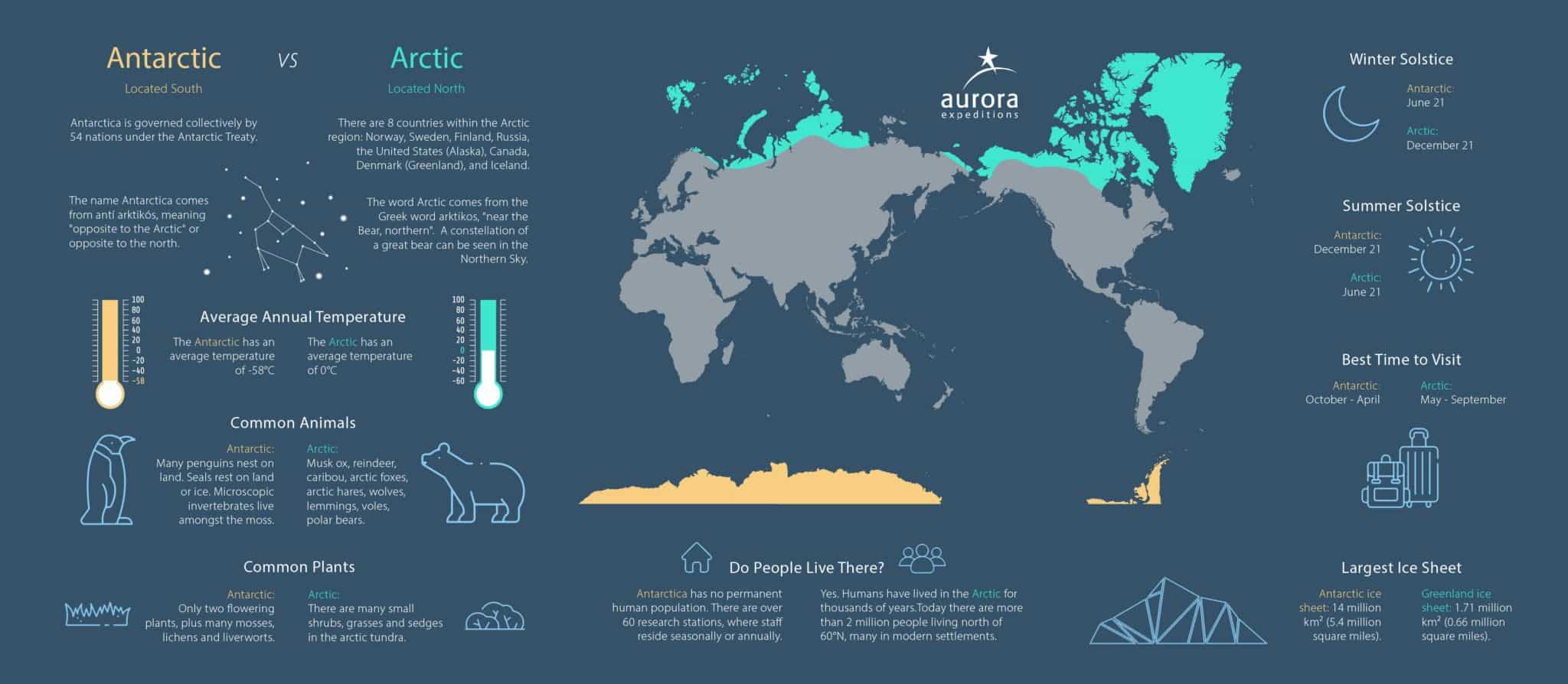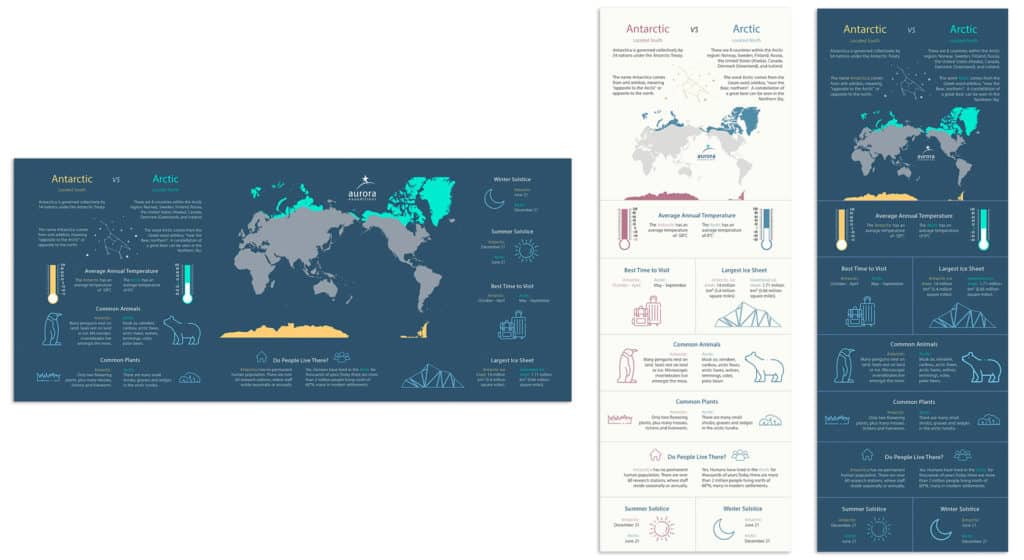The Polar Difference
They are at polar ends of the earth, but how different really is Antarctica to the Arctic? Which one is at the top, and which is the bottom? Can you actually go there on holiday and do they both have polar bears?
Like North America and South America, they are very different not only in what they look like but also the plants and animals that inhabit them and even their temperatures.
Download our infographic below to see some of the most distinct differences between our two polar regions.
Teachers & Students: This is a great resource for your school project or print it out and stick it on your wall.
Location
Let’s start at the top. The Arctic is on top of the world – the North Pole – and has eight countries within its region; Norway, Sweden, Finland, Russia, The United States (Alaska), Canada, Denmark (Greenland), and Iceland.
Antarctica is on the bottom of the world – the South Pole – and is its own continent governed collectively by 54 nations under the Antarctic Treaty.
What does the name mean?
The word Arctic comes from the Greek word arktikos, “near the bear, northern,” a constellation of a ‘great bear’ that can be seen only in the Northern Sky while the name Antarctica comes from anti-arktikos, meaning “opposite to the Arctic” or opposite the north.
What is the temperature?
The Arctic may seem cold with all its ice but its average temperature of 0 degrees Celsius (32 Fahrenheit) is much warmer than Antarctica which averages minus 58 degrees Celsius (-72.4 Fahrenheit).
Do the same animals live at both places?
Here’s where it gets tricky. Many people associate the snow and ice of our two polar regions with the same animals but they both have very different ecosystems.
The Arctic is famously home to reindeer and polar bears as well as musk ox, arctic hares, wolves, lemmings, voles. You can read more about these northern animals here. Although there is an abundance of birdlife in the Arctic, there are no penguins here, in fact, you won’t find any of these northern animals in Antarctica, they are very unique and different locations.
Read more about why there are no penguins in the Arctic.
Antarctica is where you’ll find penguins. There are eight species of penguins that live on Antarctica and its surrounding sub-Antarctic islands. Antarctica is also home to seals who rest on the land and ice, as well as microscopic invertebrates who live amongst the moss.
Are there any plants?
Yes, there is plant life in both the Arctic and Antarctica.
In the Arctic tundra, there are many small shrubs, types of grass and sedges but it is very different in Antarctica where only one per cent of the ground cover is not snow and ice. In this small area, mostly in the summer months, there are two flowering plants, Antarctic pearlwort and Antarctic hair grass, as well as some species of mosses, lichens and liverworts.
Can humans live there?
The Arctic is made up of eight countries with more than two million people living there. Humans have lived there for thousands of years.
Antarctica has no permanent human population. There are over 60 research stations where staff reside seasonally or annually.
Can I visit?
Yes, you can visit both the Arctic and Antarctica and you can explore their natural beauty with us! The best time of year to visit the Arctic is between May and September. Antarctica is a more exclusive experience and the best way to experience it is on an Aurora Expeditions voyage between October and May.
View all our upcoming Antarctic 2021-22 season trips right here and see all the activities that you can do on your trip.
Download your own Arctic vs Antarctic infographic
Before you go, don’t forget to download your own Arctic vs Antarctic infographic.
Top photos of polar bears and penguin: left – Canadian Tourism Commission, right – Matt Horspool



